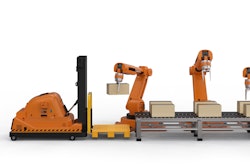
Coresight Research and the Retail Innovation Club hosted the Hype Innovation Showcase, The Future of the Store: Sustainability & Supply Chain to discuss innovation and the increasing importance of sustainability.
These are our key insights from the event:
• Transparency in communicating its sustainability objectives represents a retailer’s bold commitment towards strategic stewardship.
• Business transformation and operational efficiencies throughout the value chain are enabled by technologies such as enterprise resource planning (ERP), blockchain, robotics, artificial intelligence (AI), natural language processing (NLP) and machine learning.
• Retailers can improve business processes by continuously engaging with their workforce and customers.
Technology-enabled operational efficiency
Developing a deep, end-to-end understanding of the value chain enables retailers to minimize their production of waste (including damaged and recalled products) and drive operational efficiency. There are a number of technologies that facilitate this, such as by gathering relevant data to inform retailers’ decision-making and mitigate risk.
• ERP allows retailers to anticipate issues before they occur and take preventative or corrective actions accordingly—for example, rerouting inventory, optimizing transportation and analyzing systems of behavior to prevent wasteful actions from occurring again.
• 3D digital design software is used in the apparel sector to create virtual, true-to-life renderings of garments in order to validate concepts and approve colors and patterns before production.
• Blockchain technology benefits retailers by offering greater transparency throughout the supply chain, thus providing easier traceability and enhanced security. For payments, blockchain removes the need for third party involvement and facilitates faster transactions through peer-to-peer, cross-border transfers of digital currency—resulting in increased efficiency for the retailer and convenience for the consumer.
• Robotics can be employed by retailers to increase space efficiency, which is a dimension of sustainability. Reducing infrastructure requirements lowers energy consumption and improves HVAC efficiency, resulting in energy cost-savings for the retailer. Fabric is a technology company that provides micro-fulfillment services using robotics and AI. The use of robots removes the need for on-site manual labor and allows retailers to make more efficient use of their physical space. Fabric optimizes space efficiency at retailers’ sites or its third-party logistics site with a tailored solution to support each retailer’s level of inventory.
• Data analytics can be used by retailers to reduce the number of returns from the e-commerce channel. Returns result in processing costs, lost revenue, potential landfill waste (from damaged products and used packaging, for example) and added logistics requirements—such as transportation, which increases carbon emissions. Reducing e-commerce returns therefore comprises one sustainability goal for many retailers. According to technology company Newmine, lost revenue for retailers as a result of returns is set to increase from $205 billion in 2020 to $290 billion in 2022. Because 65% of returns are controllable, the reduction opportunity is $133 billion in 2020 and upwards of $189 billion through 2022. The company helps retailers to optimize retail commerce and reduce returns by gathering and analyzing data from multiple retail systems—merchandising, planning, product information management, product lifecycle management, order management, warehouse management, customer relationship management—as well as product reviews. Newmine uses data analytics, AI, NLP and machine learning to identify and understand the primary reasons for returns—such as sizing, product quality and misleading marketing—so that retailers can take actions to address the challenges.
• Improving processes workforce engagement, such as polling the factory floor, could help to reduce inefficiencies by identifying the processes that workers believe are inefficient or not adding value. Similarly, customer engagement allows retailers to gain an insight into what shoppers consider to be important to them, and so react accordingly. Consumer desires have been found to gain momentum to the point of influencing public opinion and affecting government policy.















